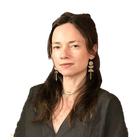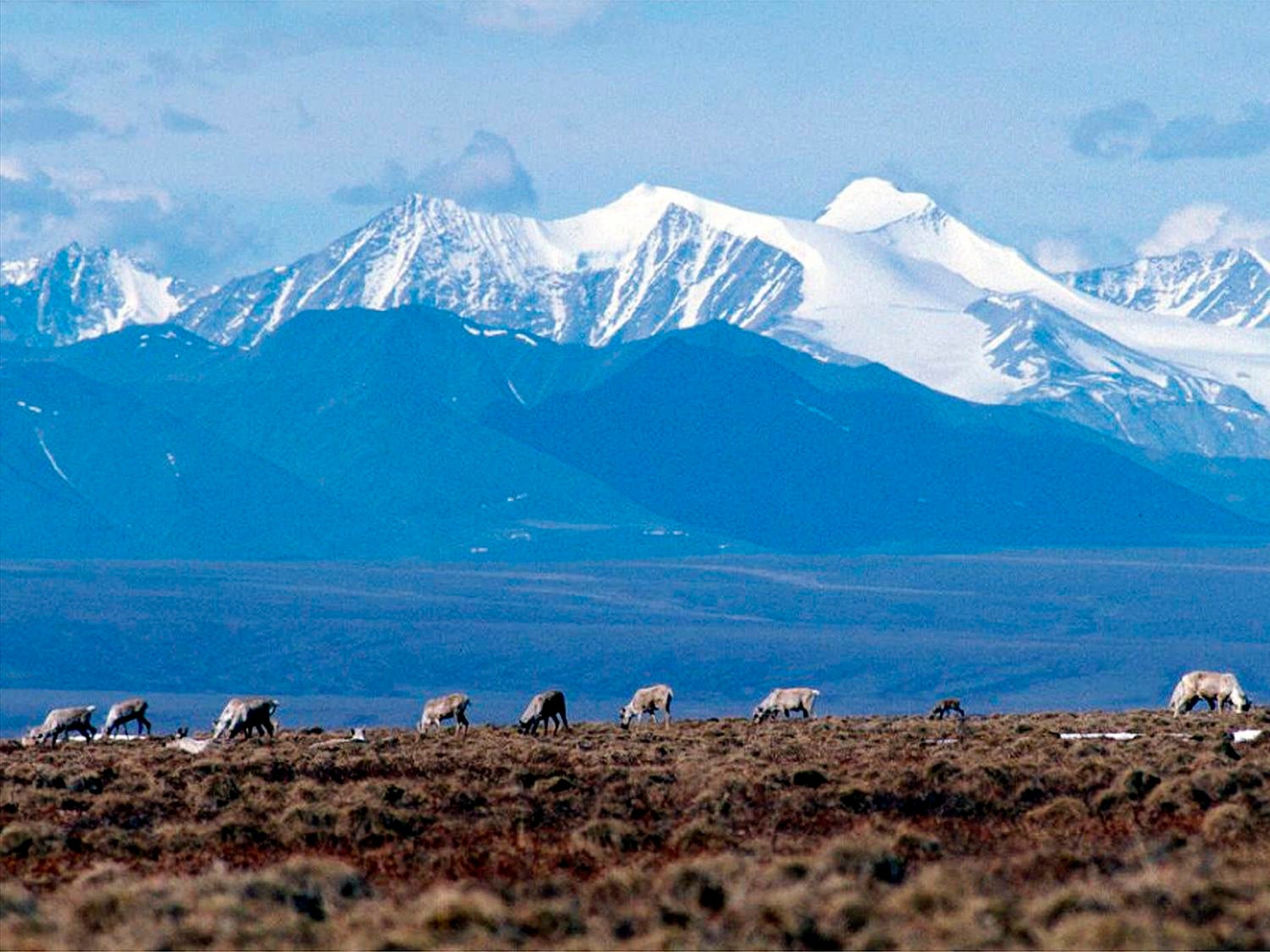‘We don’t care how they do it in the Lower 48’: The rural Alaskan men refusing the vaccine
‘I work in the woods and I don’t socialize,’ says one Alaskan whose grandfather died fishing at sea and whose uncle was mauled by a bear


Wyatt Jones* is getting ready for a hunting trip to Admiralty, a large island in Southeast Alaska with the world’s densest population of brown bears. He carries a rifle through the woods to shoot deer and protect himself from predators, and a bow and arrow in case he sees any mountain goats.
Like 53 percent of eligible Alaskans, Jones (who declined to use his real name) has not received the Covid-19 vaccine. Instead, he says he relies on his good health, strong immune system, and isolated lifestyle to keep him protected. He hikes about ten miles a week, runs, and lives off almost all organic food that he hunts and catches himself — deer, grouse, mountain goat, salmon, and halibut.
“I really watch what I put in my body,” Jones says. He can’t remember the last time he had the flu, and it’s been seven years since he caught a cold.
Jones is not alone. According to a report by the Anchorage Daily News, many Alaskans believe that natural immunity is a stronger prevention from Covid-19 than a vaccine.
The numbers, however, present a different story. Alaska recently led the nation in Covid related hospitalizations, and due to a recent surge in cases, ICU beds in Anchorage, Alaska’s largest city, are near capacity.
Doug Johanssen*, a third-generation commercial fisherman who also asked to use a pseudonym, is aware of the numbers, yet still refrains from getting vaccinated. “I’m not against it, I just don’t think I fit into the category of people who need it,” he says. “I work outside on a fishing boat with one other guy. I wear a mask in stores. I don’t socialize. I think I’m pretty healthy.”
Some maintain that their isolated way of life makes them low risk for catching the virus. With only 1.28 residents per square mile and fifty-seven million acres of designated wilderness, one-third of Alaskans live in a rural area, and some live in places accessible only by boat or float plane. Even today many Alaskans are self-reliant, cutting down trees to heat their homes, hunting, fishing, gathering and growing their own food. Some live off the grid entirely without electricity or running water.
“I spend lots of time in the woods with one or two hunting partners, work in a room by myself for six to eight hours a day, don’t go out, and don’t socialize,” Jones says.
Due to Alaska’s abundant natural resources, many Alaskans work outside in dangerous jobs such as commercial fishing, mining, logging, and on oil rigs. In “The Real Alaskan: Nostalgia and Rural Masculinity in the Last Frontier,” Maureen Patricia Hogan writes that Alaska represents the epitome and proving ground of American rural masculinity. Even for those Alaskans who live in more capitalist urban spaces, the nostalgia of rural Alaskan masculinity still maintains its dominance.
Hogan explains that “though the wilderness challenge has been somewhat tamed, the wildness of Alaska is still palpable and deadly.” Johanssen’s grandfather died while fishing at sea, and his uncle was mauled by a brown bear. He describes his father, grandfather, uncles, and other “old timers from back in the day” as “tough warriors,” with almost a mythical reverence.
For many Alaskans, signing up for a new vaccine contradicts Alaska’s rural masculine values of physical strength, fortitude, and independence. Medical experts agree that widespread vaccination is necessary for slowing community spread of the virus. But Alaskans like Jones and Johanssen remain unconvinced. For those who work outside harvesting and extracting natural resources, their bodies are their greatest resource. They must assume that their physical prowess is enough for their survival. To inject medicine designed to save their life is an admittance of weakness and vulnerability, and is in direct contradiction to their idea of the self-reliant, capable Alaskan man.
Then there is the general distrust of medicine altogether. Hogan writes: “The real Alaskan is a cultural symbol deeply coded as masculine, rural, and white, which marginalizes that which is feminine, urban, and Native.” Medicine, scientific research, and government all fall under the general “urban” umbrella and contradict the rural Alaskan masculine narrative.
According to the ADN survey, one-quarter of polled vaccine-hesitant Alaskans expressed concerns over the vaccine’s safety. (Similarly, Alaska has the second-lowest rate of influenza vaccination in the country.) Alaska’s Chief Medical Officer Dr. Anne Zink says, “It’s really easy to overestimate the side effects or the risk of something new versus underestimate the risk of something we do all the time, like getting in the car.”
For about three-quarters of the hesitant group, their most trusted source of information around Covid-19 came from family and friends, as opposed to medical professionals and experts. Brett Dillingham, anthropologist and director of the Performance Literacy Institute (who has received the vaccine) describes how there used to be a fairly ubiquitous bumper sticker that read “We don’t care how they do it in the Lower 48” [the continental United States].
“We didn’t care, because Alaskans were building our own economy, and many of us left the Lower 48 because it didn’t work for us. Many of the hippies have 30.06 rifles with which they kill deer and caribou to eat. So vaxxing, don’t tell me to do it, because that makes me distrust you,” Dillingham explains as the mentality of such Alaskans.
Brent Crowe, who runs a seafood tender in the small town of Haines (population 1,863) and tries to avoid doctors unless absolutely necessary, was initially skeptical of the vaccine. Eventually he got the shot when he decided that the benefits outweighed the risks, although he put his children on a delayed immunization schedule.
Connor Karlsson (who asked me to withhold his real name) gillnet-fishes salmon in Southeast Alaska. Initially he was nervous about taking what he refers to as an “experimental” vaccine, but eventually got the shot. And although he has been wrestling with a herniated disk for several years, he is hesitant to visit a doctor. “Most, not all, doctors in the US become doctors for the money. It’s a for-profit business,” he explains as his reasoning.
Johanssen says that when his body hurts after long days of gillnetting, he rubs CBD oil on his muscles rather than pop an ibuprofen. When he severed his finger fishing, he bandaged it himself and left it to heal without ever stepping foot in the emergency room.
Jones believes that the vaccine can be beneficial for people who are at high risk for Covid. He doesn’t see it as a political issue. “Trump got it going and Biden keeps it going. I don’t see it as a left or right thing.” However, he adds, “I also believe in personal choice.”
The combination of a general distrust in the American medical system, geographical isolation, and an independent streak, many Alaskans view the vaccine as unnecessary. In many ways, it also seems that the vaccine is a reminder of one’s own vulnerability and one’s own connectedness to the rest of the world, which contradicts the rural Alaskan male ideology. To accept the shot is to accept the fact that the body cannot beat death on its own — and that isolation may not be the answer to everything.

Join our commenting forum
Join thought-provoking conversations, follow other Independent readers and see their replies